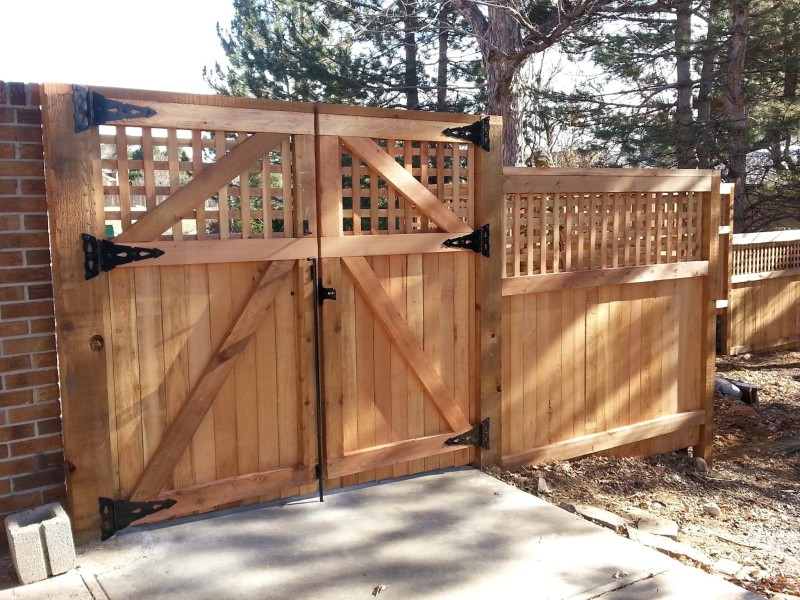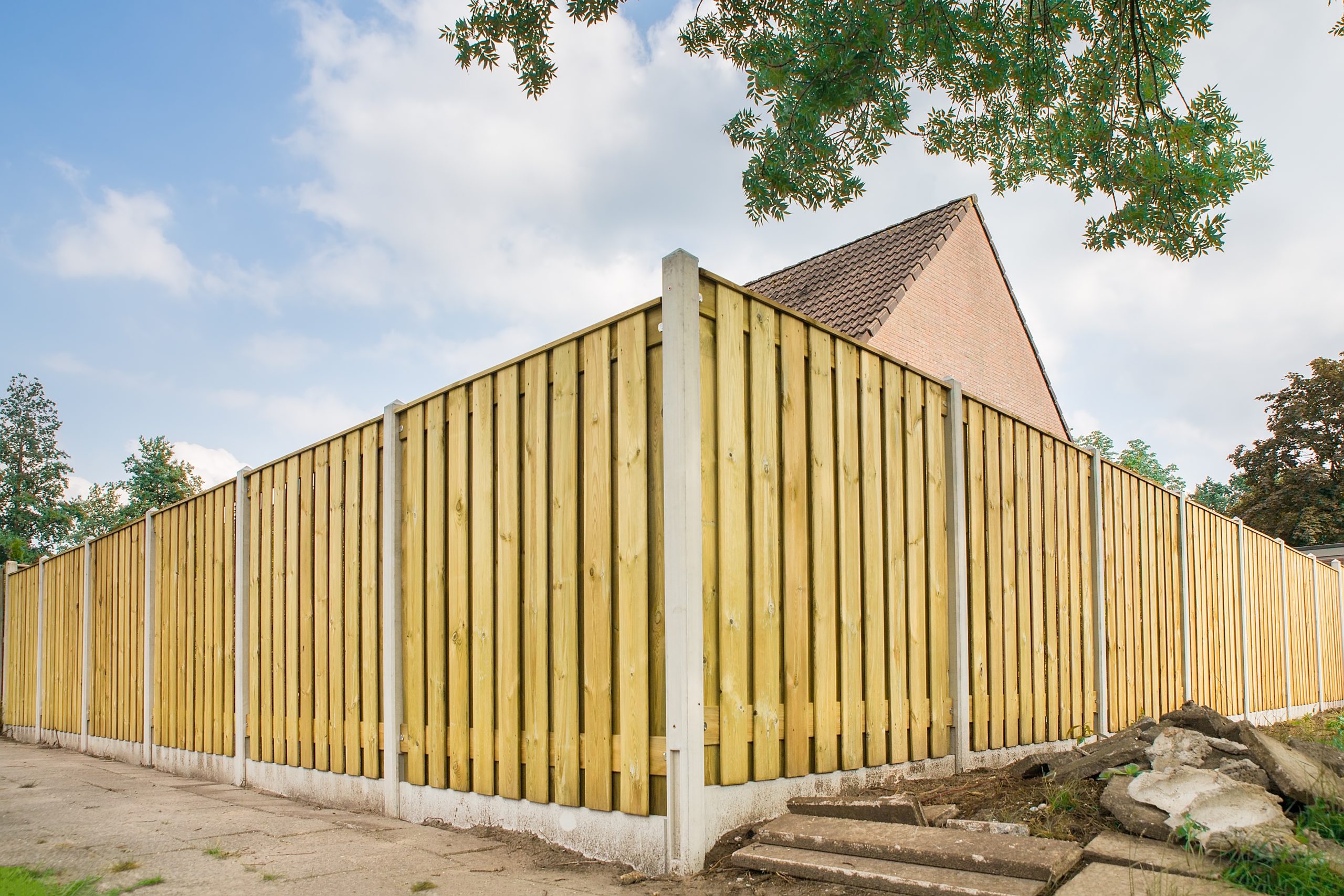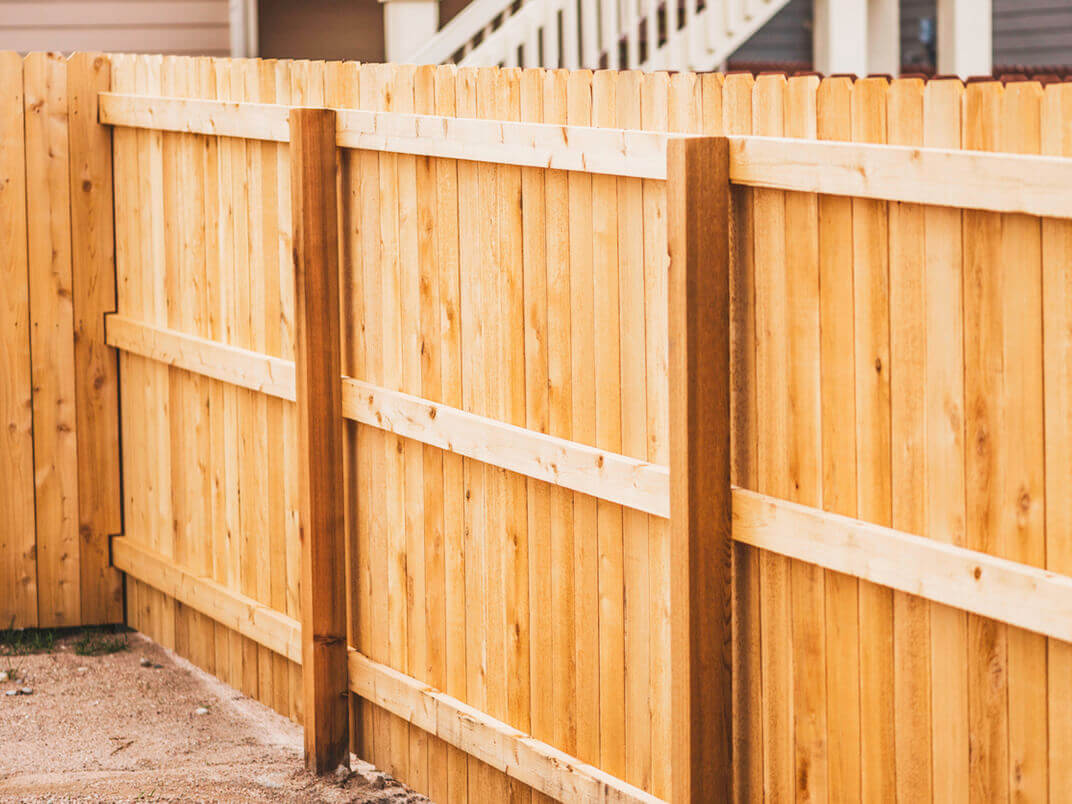All Categories
Featured
When it involves keeping a wood fencing, homeowners often face the choice of whether to discolor or repaint. Both alternatives have their disadvantages and pros, and the choice inevitably relies on your aesthetic preferences, the kind of wood, and just how much maintenance you're eager to commit to. Right here's a thorough contrast to help you make an informed choice.
The Basics of Painting and Discoloration
Paint entails covering the timber with an opaque layer of color. It offers full coverage, hiding the timber grain while providing superb security versus ecological aspects.
Tarnishing penetrates the wood, boosting its all-natural charm while including a safety layer. Depending upon the kind, stains can vary from transparent to solid, permitting differing degrees of timber grain exposure.
Advantages And Disadvantages of Painting
Pros:
Wide Variety of Color styles: Paint offers unlimited color alternatives, enabling you to match your fencing to your home's outside or personal style.
Longer Long-term: Top quality exterior paint can last approximately 5-7 years, calling for less constant reapplication.
Superior Defense: Repaint types a thick, solid obstacle against moisture, UV rays, and pests.
Cons:
Cracking and peeling: With time, paint can fracture or peel off, specifically in areas with extreme weather.
Hides Natural Wood Charm: If you love the all-natural grain of wood, paint may not be the most effective choice.
Greater Maintenance: Repainting requires removing the old paint, which can be labor-intensive.
![]()
Benefits And Drawbacks of Staining
Pros:
Natural Appearance: Stains preserve and boost the all-natural charm of the timber, making it suitable for top quality hardwood like cedar or redwood.
Simpler to Reapply: Unlike paint, spots don't break or peel off. Reapplying stain normally needs less surface area preparation.
Versatile Complete Options: Discolorations can be found in transparent, semi-transparent, and strong ranges, using different levels of coverage.
Cons:
![]()
Much Shorter Life Expectancy: Spots, especially clear and semi-transparent ones, may require reapplication every 2-3 years.
Limited Shade Options: While discolorations provide all-natural tones, they lack the wide shade scheme readily available with paint.
Less Protective: Discolorations pass through the timber however don't offer as thick an obstacle as paint, making them a little less protective against extreme weather condition.
Elements to Take Into Consideration
Aesthetic Preferences: If you desire vivid shades and full insurance coverage, paint is the way to go. For a natural and rustic appearance, select stain.
Wood Kind: High-grade woods with beautiful grains benefit from discoloration, while lower-grade timbers can be repainted for a refined appearance.
![]()
Environment: In damp or moist climates, paint's thicker barrier might supply better protection. In moderate or completely dry environments, discolorations can be sufficient.
Maintenance Dedication: Paint entails less constant reapplication yet more initiative during touch-ups. Staining needs routine upkeep but is less complicated to handle.
Final Ideas
Both paint and discoloration can efficiently secure and improve your wood fencing. The very best alternative relies on your priorities, whether they favor aesthetic appeals, resilience, or ease of upkeep. By understanding the advantages and downsides of each, you can select the finish that lines up with your requirements and guarantees your fence continues to be a standout feature of your property for many years to find.
The Basics of Painting and Discoloration
Paint entails covering the timber with an opaque layer of color. It offers full coverage, hiding the timber grain while providing superb security versus ecological aspects.
Tarnishing penetrates the wood, boosting its all-natural charm while including a safety layer. Depending upon the kind, stains can vary from transparent to solid, permitting differing degrees of timber grain exposure.
Advantages And Disadvantages of Painting
Pros:
Wide Variety of Color styles: Paint offers unlimited color alternatives, enabling you to match your fencing to your home's outside or personal style.
Longer Long-term: Top quality exterior paint can last approximately 5-7 years, calling for less constant reapplication.
Superior Defense: Repaint types a thick, solid obstacle against moisture, UV rays, and pests.
Cons:
Cracking and peeling: With time, paint can fracture or peel off, specifically in areas with extreme weather.
Hides Natural Wood Charm: If you love the all-natural grain of wood, paint may not be the most effective choice.
Greater Maintenance: Repainting requires removing the old paint, which can be labor-intensive.

Benefits And Drawbacks of Staining
Pros:
Natural Appearance: Stains preserve and boost the all-natural charm of the timber, making it suitable for top quality hardwood like cedar or redwood.
Simpler to Reapply: Unlike paint, spots don't break or peel off. Reapplying stain normally needs less surface area preparation.
Versatile Complete Options: Discolorations can be found in transparent, semi-transparent, and strong ranges, using different levels of coverage.
Cons:

Much Shorter Life Expectancy: Spots, especially clear and semi-transparent ones, may require reapplication every 2-3 years.
Limited Shade Options: While discolorations provide all-natural tones, they lack the wide shade scheme readily available with paint.
Less Protective: Discolorations pass through the timber however don't offer as thick an obstacle as paint, making them a little less protective against extreme weather condition.
Elements to Take Into Consideration
Aesthetic Preferences: If you desire vivid shades and full insurance coverage, paint is the way to go. For a natural and rustic appearance, select stain.
Wood Kind: High-grade woods with beautiful grains benefit from discoloration, while lower-grade timbers can be repainted for a refined appearance.

Environment: In damp or moist climates, paint's thicker barrier might supply better protection. In moderate or completely dry environments, discolorations can be sufficient.
Maintenance Dedication: Paint entails less constant reapplication yet more initiative during touch-ups. Staining needs routine upkeep but is less complicated to handle.
Final Ideas
Both paint and discoloration can efficiently secure and improve your wood fencing. The very best alternative relies on your priorities, whether they favor aesthetic appeals, resilience, or ease of upkeep. By understanding the advantages and downsides of each, you can select the finish that lines up with your requirements and guarantees your fence continues to be a standout feature of your property for many years to find.
Latest Posts
Unlock WyHy Federal Credit Union – Top Benefits for Your Financial Future
Published en
1 min read
Discover Premier Car Repair Services offered by Montclare Auto Repair – Drive with Confidence
Published en
1 min read
Uncover Montclare Auto Repair’s Most Popular Auto Repairs and Why Drivers Rely On Them
Published en
1 min read
More
Latest Posts
Unlock WyHy Federal Credit Union – Top Benefits for Your Financial Future
Published May 23, 25
1 min read
Discover Premier Car Repair Services offered by Montclare Auto Repair – Drive with Confidence
Published May 22, 25
1 min read
Uncover Montclare Auto Repair’s Most Popular Auto Repairs and Why Drivers Rely On Them
Published May 21, 25
1 min read